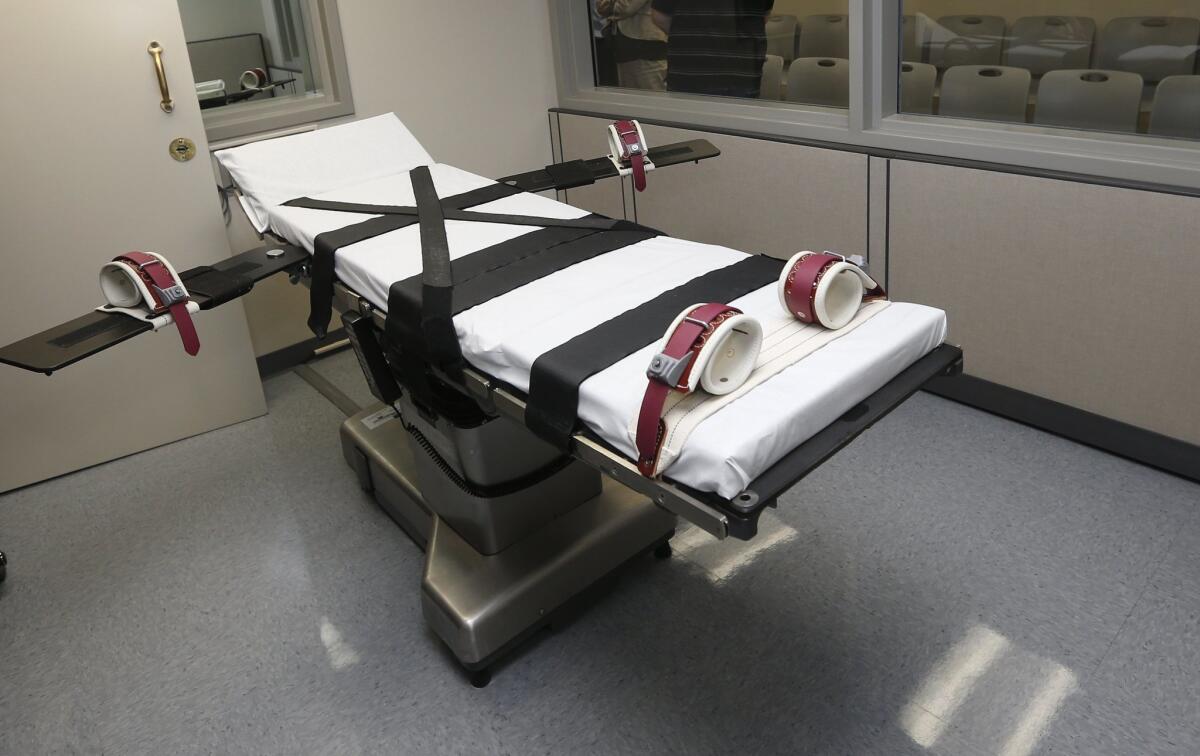Opinion: Oklahoma finally confronts its horribly flawed death penalty system

After a botched execution and revelations that prison officials used the wrong drug on another condemned man, Oklahoma declared a moratorium on executions 18 months ago until it could straighten out its death penalty system. A subsequent grand jury report on the wrong-drug scandal found eight specific failures, including unauthorized changes in how the executions take place, and that the governor’s general counsel urged an execution proceed even knowing the wrong drug was in hand.
And now a year-long review of the state’s death penalty system urges the moratorium be continued pending “significant reforms.” Yet the 294-page report by the Oklahoma Death Penalty Commission also makes it pretty clear to an outside reader that the death penalty is impossible to fix.
“Many of the findings of the Commission’s year-long investigation were disturbing and led Commission members to question whether the death penalty can be administered in a way that ensures no innocent person is put to death,” the report says. “It is undeniable that innocent people have been sentenced to death in Oklahoma. And the burden of wrongful convictions alone requires the systemic corrections recommended in this report.”
In fact, the Death Penalty Information Center reports that Oklahoma has sentenced 310 people to death since capital punishment was revived in 1976. But there also have been 10 exonerations, or one wrongly convicted and condemned person for every 31 cases. And those exonerations only capture the innocent who could prove they had been condemned in error.
The Oklahoma commission made 46 recommendations including better training and pay for the capital defense bar, higher forensics standards and mandatory video recording of interrogations. Those are all well and good — it’s appalling they aren’t already the standards in the state with the nation’s highest per capita execution rate — but the recommendations are really just an effort to buff up an inherently and irredeemably flawed system.
The problem is the human factor. It’s not a regular occurrence, but police botch investigations; prosecutors intent on winning commit misconduct; witnesses lie or are mistaken; and jurors, despite a robust voir dire, measure evidence and testimony through the prejudice of personal prisms. All of that has conspired to deliver death sentences disproportionately to people of color and the poor (often the same subsets).
That is not fixable. The American criminal justice system might be the best we can create, but it’s not fail-proof. And when the result is the killing of a human being, it has to be fail-proof.
We like to view ourselves as a reliably liberal state, a trendsetter in culture as well as politics. We should live up to that.
The National Academy of Sciences published a report three years ago that estimated at least 4% of the nation’s current 2,900 death row inmates are innocent of the crimes for which they have been condemned. That’s about 120 people currently awaiting execution dates who are not guilty of murder. Some may get exonerated, but that’s an insufficient safeguard. Life without parole is punitive and protects society from violent killers without the inverse problem of mistakenly killing the innocent.
California is having its own capital punishment struggle. Voters last year unfortunately not only rejected a measure that would have ended the barbaric practice, but also approved a referendum to speed up the process through measures that will increase the likelihood that the innocent will die, and that constitutional liberties will be compromised. A legal challenge to that initiative is pending before the state Supreme Court.
Meanwhile, the state corrections department recently received an extension as it tries to devise a new single-drug lethal injection protocol that will pass legal muster. California’s last execution came more than a decade ago, and death row now holds 749 people, some 20 of them so insane they likely can’t be executed, and more so mentally ill they require in-patient care in a special death row psychiatric ward. The moratorium arose from legal challenges, and state officials were supposed to have finalized their new protocol, but the breadth and depth of public comments — including by the ACU and other death penalty opponents poised to sue — has extended that process, as well.
The better course here would be for the state Legislature to do what the voters would not and end capital punishment in California. We like to view ourselves as a reliably liberal state, a trendsetter in culture as well as politics. We should live up to that.
Follow my posts and re-tweets at @smartelle on Twitter
More to Read
A cure for the common opinion
Get thought-provoking perspectives with our weekly newsletter.
You may occasionally receive promotional content from the Los Angeles Times.







